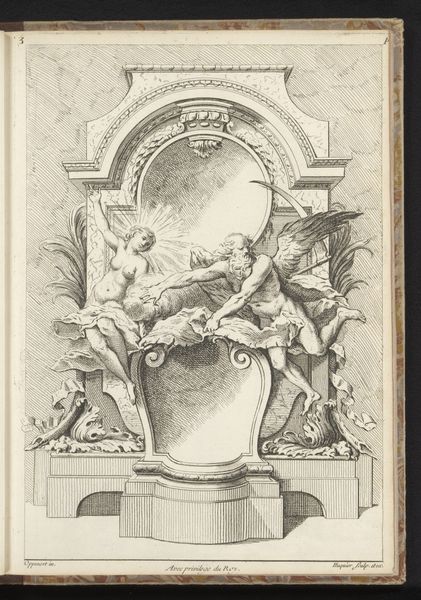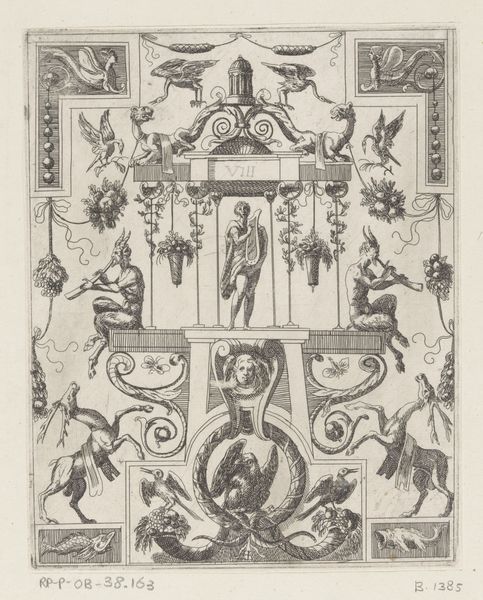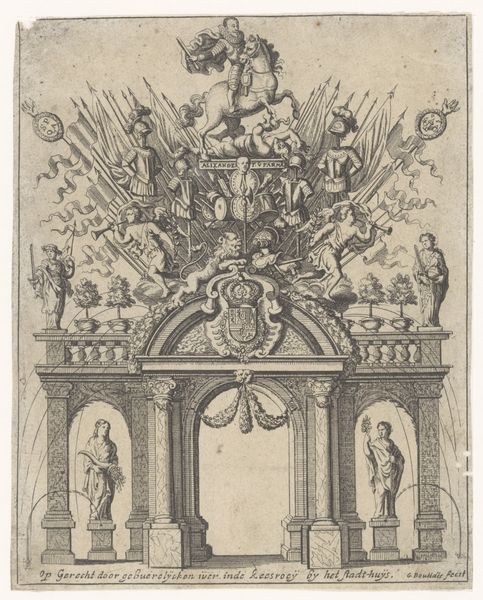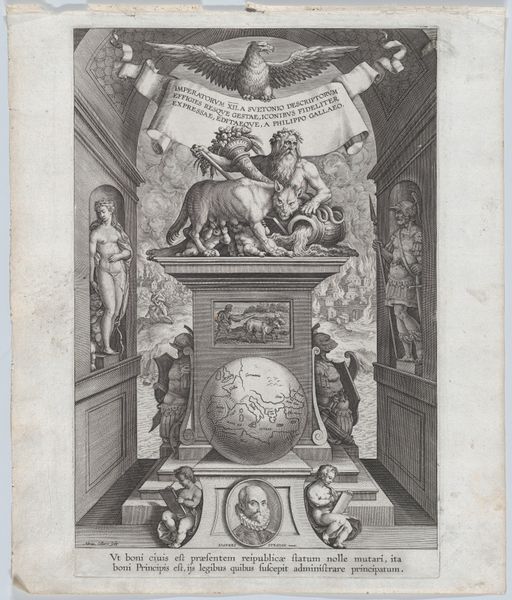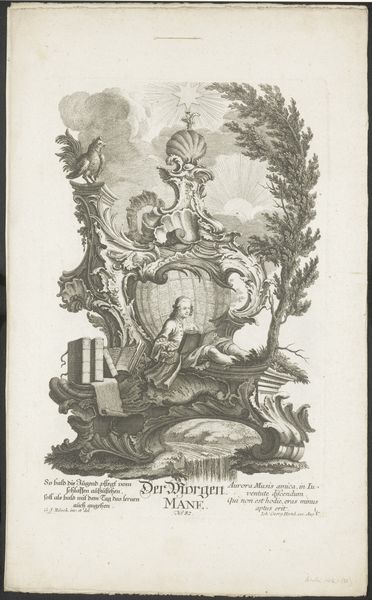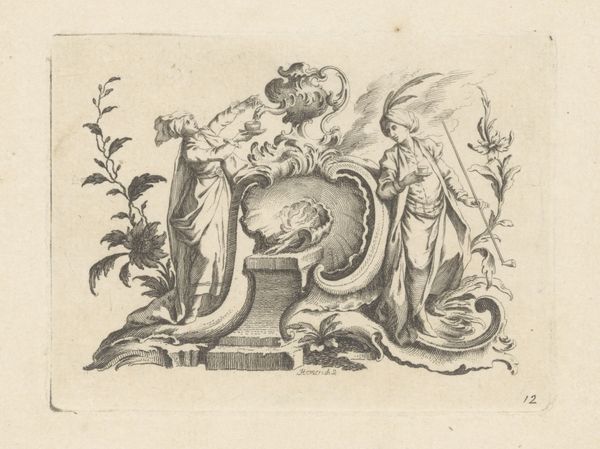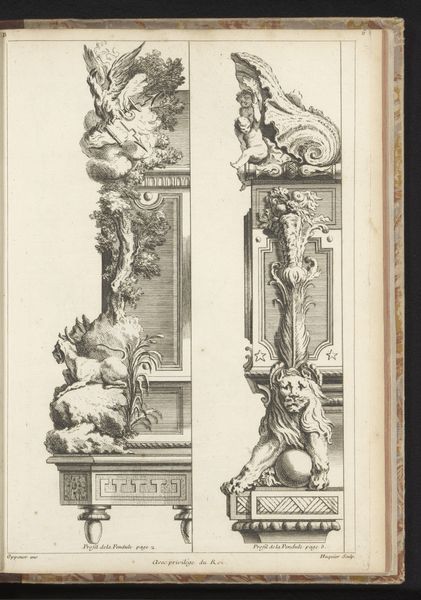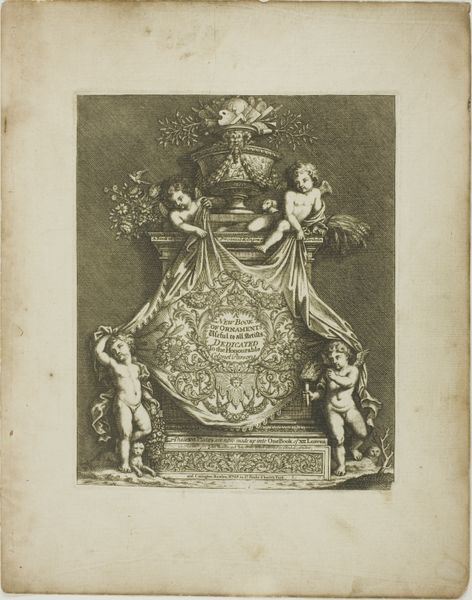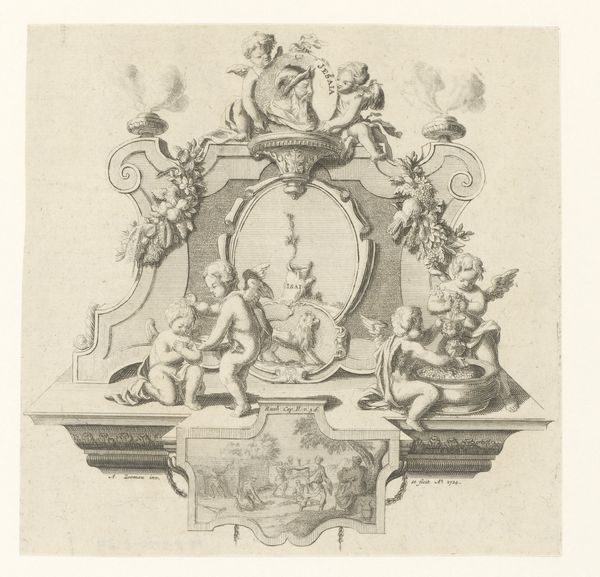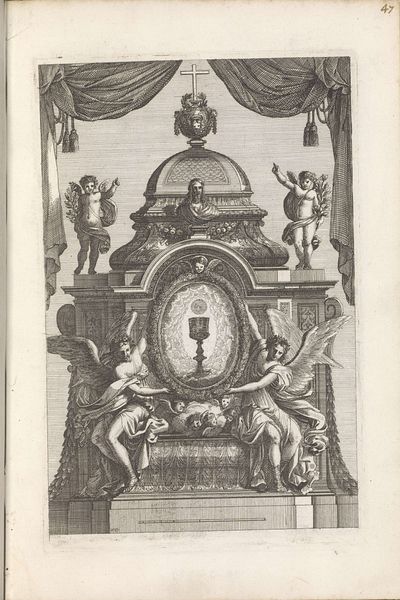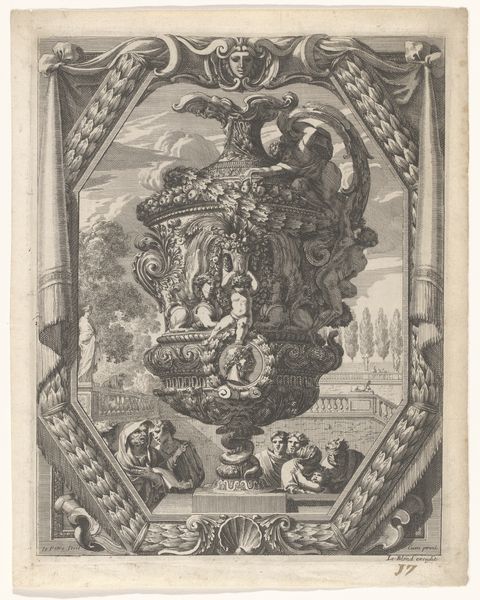
Ornament met putti aan weerszijden van een vaas met daarop dolfijnen en een vogel c. 1725 - 1750
0:00
0:00
gabrielhuquier
Rijksmuseum
drawing, ornament, pen, engraving
#
drawing
#
ornament
#
pen drawing
#
figuration
#
pen
#
engraving
#
rococo
Dimensions: height 325 mm, width 235 mm
Copyright: Rijks Museum: Open Domain
Curator: Immediately, my eye is drawn to the overall balanced composition—a very symmetrical and centralized design that radiates elegance. Editor: Indeed. Let's delve into "Ornament met putti aan weerszijden van een vaas met daarop dolfijnen en een vogel," created by Gabriel Huquier between 1725 and 1750. It’s a pen drawing showcasing quintessential Rococo sensibilities, currently residing here at the Rijksmuseum. This kind of design reflects a very particular visual culture. Curator: The swirling lines! I notice a beautiful rhythmic quality as the eye traces the lines and forms, particularly how the cherubic figures play around this extravagant vase, capped by a shell. Editor: Right, these putti signal not just the era's taste for playful eroticism, but its reliance on classical allegories to bolster aristocratic power and taste. These images of "innocence" and "beauty" became key in constructing identities amongst elites, visible everywhere from their wallpaper to their gardens. Curator: That is interesting—considering it purely formally, I am impressed by how the artist achieved such dimensionality with just line work, how they defined texture using hatchings. What would have this design been used for? Editor: Likely as a template for artisans and craftsmen working in everything from furniture making to the decorative arts. These types of ornamental prints would have disseminated throughout Europe, dictating the aesthetic standards among elite circles while offering new avenues for consumerist production. Curator: It’s easy to imagine elements like this embellishing a Parisian salon! What I find fascinating is the way the stark medium gives even such a frilly design an edge of seriousness. Editor: Exactly! And in a time of emerging print culture, the design encapsulates both top-down imposition of "good taste," and the democratic promise of a wider audience, hinting at the paradoxes and performativity central to the Rococo period and its complex social life. Curator: Yes, seeing that tension between access and aspiration helps me connect more deeply with its original impact. Thanks. Editor: My pleasure; spotting the way Huquier marries aesthetic form and the burgeoning market for design gives me something to think about as well.
Comments
No comments
Be the first to comment and join the conversation on the ultimate creative platform.
